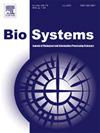Unravelling intrinsically disordered and compositionally biased proteins in the cereal proteomes
IF 2
4区 生物学
Q2 BIOLOGY
引用次数: 0
Abstract
Intrinsically disordered proteins (IDPs) play key biological functions despite lacking predetermined 3D structures. They are often compositionally biased and characterized by specific amino acid compositions. Here, we investigated protein intrinsic disorder in rice, wheat, barley, maize, sorghum, oat and rye proteomes. Then, we studied the distribution of compositionally biased proteins (CBs) in these species. The data showed that the contents of compositional biased proteins (CB), the average protein sizes, and biased sequence sizes were similar in the studied proteomes. Furthermore, the CB proteins were enriched in intrinsic disorder and IDPs were characterized by noticeable composition biases. In addition, the polar and the charged residues were the most abundant among the types of the biased residues. Gene Ontology analysis revealed that CB proteins in the studied species are mainly involved in binding, catalytic activity, and transcription regulation.
Altogether, our findings indicated that there is a noticeable conservation of intrinsically disordered and CB proteins in cereals. The evolutionary conservation of these features implies that cereals may use common cellular and regulatory mechanisms to adapt to various environmental constraints.
揭示谷物蛋白质组中内在无序和成分偏向的蛋白质。
内在无序蛋白(IDPs)尽管缺乏预定的3D结构,但仍发挥着关键的生物学功能。它们通常在成分上有偏倚,并以特定的氨基酸组成为特征。在此,我们研究了水稻、小麦、大麦、玉米、高粱、燕麦和黑麦蛋白质组的蛋白质内在紊乱。然后,我们研究了组成偏向蛋白(CBs)在这些物种中的分布。结果表明,所研究蛋白质组的组成偏倚蛋白(CB)含量、平均蛋白大小和偏倚序列大小相似。此外,CB蛋白在内在无序中富集,IDPs具有明显的组成偏差。在偏置残基类型中,极性残基和带电残基最为丰富。基因本体分析显示,所研究物种的CB蛋白主要参与结合、催化活性和转录调控。总之,我们的研究结果表明,谷物中存在明显的内在无序和CB蛋白的保存。这些特征的进化守恒意味着谷物可能使用共同的细胞和调节机制来适应各种环境约束。
本文章由计算机程序翻译,如有差异,请以英文原文为准。
求助全文
约1分钟内获得全文
求助全文
来源期刊

Biosystems
生物-生物学
CiteScore
3.70
自引率
18.80%
发文量
129
审稿时长
34 days
期刊介绍:
BioSystems encourages experimental, computational, and theoretical articles that link biology, evolutionary thinking, and the information processing sciences. The link areas form a circle that encompasses the fundamental nature of biological information processing, computational modeling of complex biological systems, evolutionary models of computation, the application of biological principles to the design of novel computing systems, and the use of biomolecular materials to synthesize artificial systems that capture essential principles of natural biological information processing.
 求助内容:
求助内容: 应助结果提醒方式:
应助结果提醒方式:


